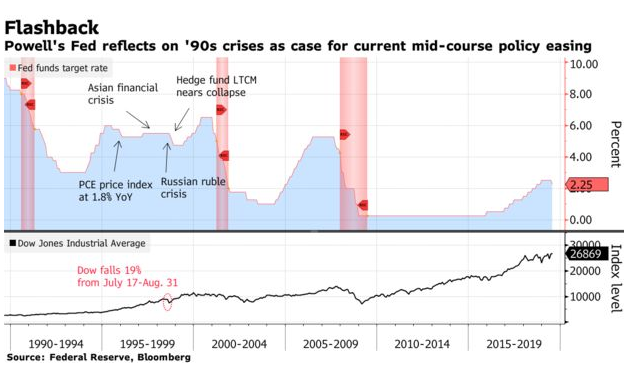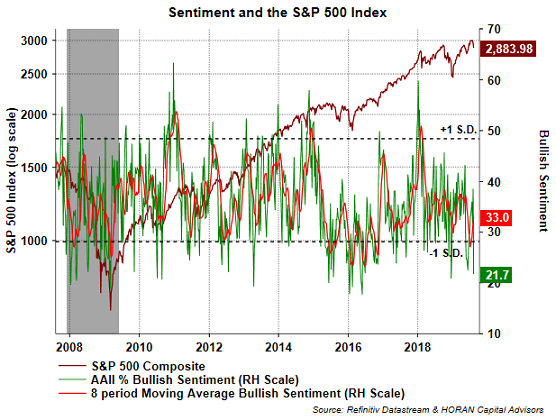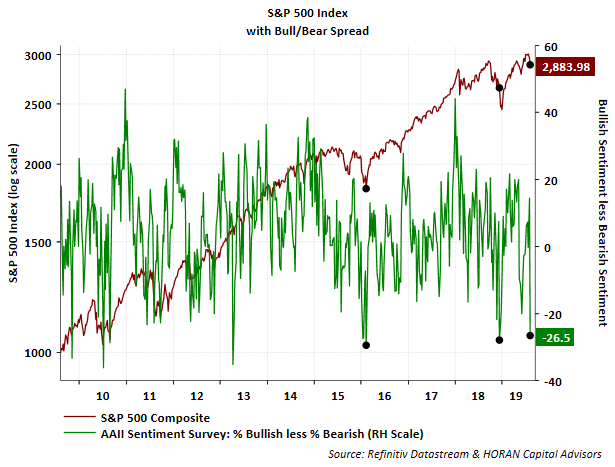“We want to perceive ourselves as winners, but successful traders are always focusing on their losses” – Peter Borish”
1. U.S. and China Are Set to Resume Trade Talks in Shanghai — negotiators will make another attempt to piece together a trade agreement amid considerably lowered expectations for a sweeping deal. People close to the talks say a major breakthrough is unlikely on points such as the U.S. insistence that China commit to legal changes to protect intellectual property and abandon state subsidies to business, or Beijing’s demands that the U.S. drop all tariffs as a condition for a deal. But more modest achievements may be possible, such as a commitment by China to purchase more agricultural products and action by the U.S. to relax its ban on U.S. companies selling to telecommunications giant Huawei Technologies.
2. Massive Data Breach at Capital One (COF) — CapitalOne disclosed a data breach exposed 140K Social Security numbers of its credit card customers, around 80K bank account records and 1M Canadian Social Insurance numbers. Additional information including names, addresses, phone numbers, credit scores and credit limits were also exposed, although credit card account numbers and log-in credentials were not taken. The suspect? Paige A. Thompson, a former employee of Amazon Web Services (NASDAQ:AMZN), where the bank had stored its customer data. Capital One (NYSE:COF) estimates the hack will cost the company approximately $100M-$150M in 2019.
3. Federal Borrowing Soars as Deficit Fear Fades — the U.S. government expects to borrow more than $1 trillion in 2019. Political support for taming deficits has faded in recent years, with Republicans supporting higher deficits in exchange for tax cuts and Democrats pushing for domestic-spending increases. Low borrowing costs suggest markets remain unfazed by all the red ink. Government debt has soared, but 10-year Treasury yields have fallen. Mainstream economists are increasingly questioning whether larger federal debt and deficits might be tolerable if put toward programs that would bolster long-term growth.
4. Hospitals May Be Forced to Disclose Discount Rates Negotiated With Insurer — The Trump administration proposed a rule requiring hospitals to disclose the discounted prices they negotiate with insurance companies, or face fines. The proposal could upend the $1 trillion hospital industry by revealing rates that have long been secret. The price-disclosure requirements would cover all of the more than 6,000 hospitals that accept Medicare, as well as some others. Hospitals that fail to share the discounted prices in an online form could be fined up to $300 a day, according to the proposal. The price-disclosure requirements would cover all the more than 6,000 hospitals that accept Medicare, as well as some others, and is likely to face fierce industry opposition. Comments on the proposal would be due in September and, if completed, the rule would take effect in January.
5. Fed Cuts Rates by a Quarter Point in Precautionary Move — the Federal Reserve cut interest rates by a quarter-percentage point—the first reduction since 2008—in a pre-emptive strike to cushion the economy from a global slowdown and escalating trade tensions. Officials also announced they would end the runoff of their $3.8 trillion asset portfolio on Thursday, two months earlier than previously planned. Fed Chairman Jerome Powell, at a news conference after the decision was released, called the rate cut a “mid-cycle adjustment” and didn’t rule out more reductions. But he also said it was “not the beginning of a long series of rate cuts” because that path is only followed at times of more severe economic distress. Powell’s remark raised comparisons to 1995-96 and 1998, when Alan Greenspan headed the Fed. In each instance, the central bank ended up cutting rates three times in a successful effort to prolong an economic upswing that until this year was the longest.

The week ahead — Economic data from Econoday.com:





